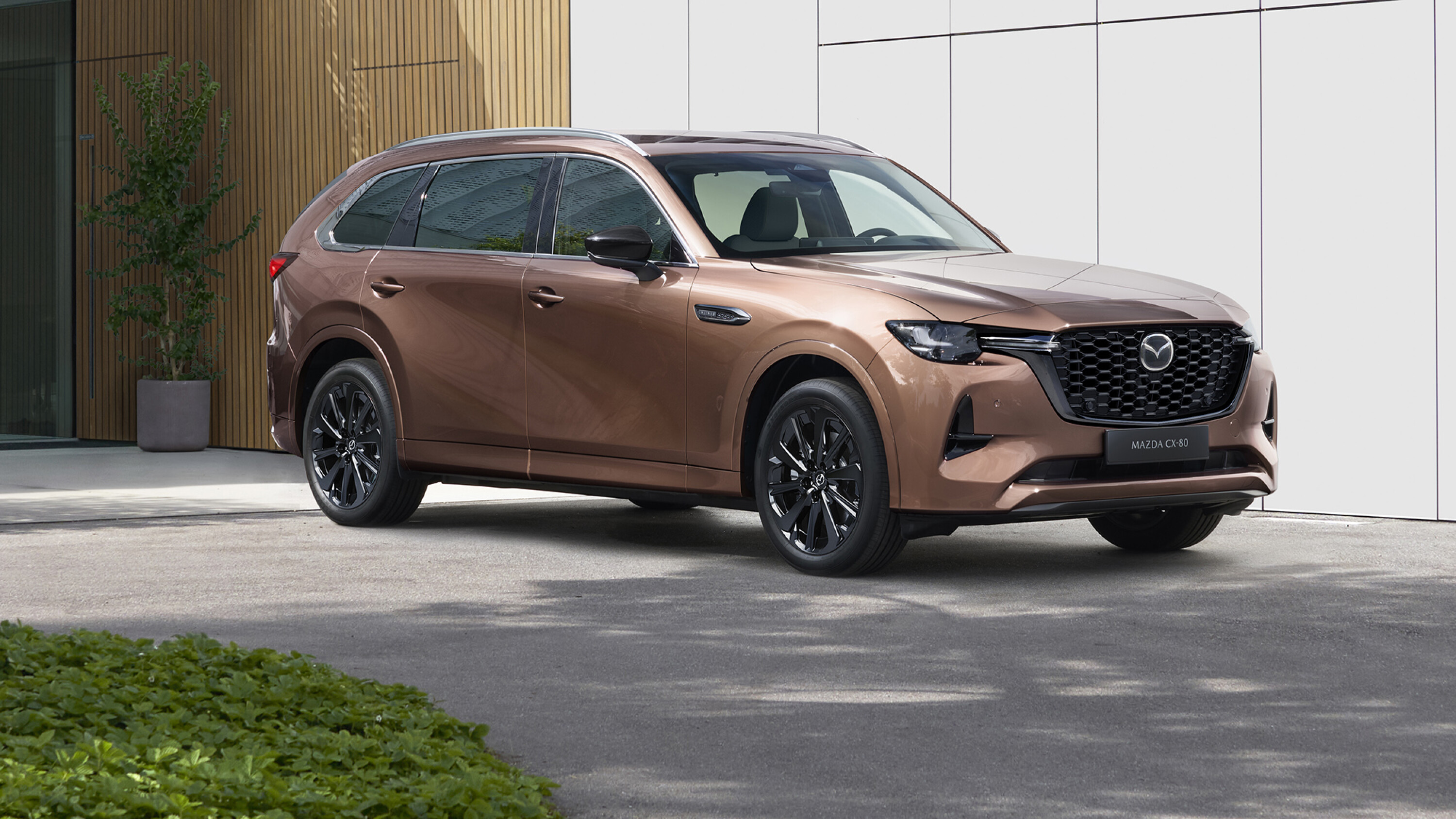The 2025 Mazda CX-80 three-row SUV has been unveiled ahead of its Australian launch.
Snapshot
- Mazda CX-80 revealed as stretched, three-row CX-60
- Large SUV to offer same petrol, diesel or PHEV powertrains; rear-biased AWD
- Due in Australia later in 2024 with six or seven seats
A successor to the recently discontinued CX-8 and CX-9 models, Mazda Australia has announced the CX-80 will arrive in local showrooms towards the end of 2024.
It’ll join the two-row CX-70 due in Australia at a similar time – plus the related CX-60 and CX-90 available now – in a medium-to-large SUV line-up that local executives have admitted will create “some overlap” in Mazda showrooms.
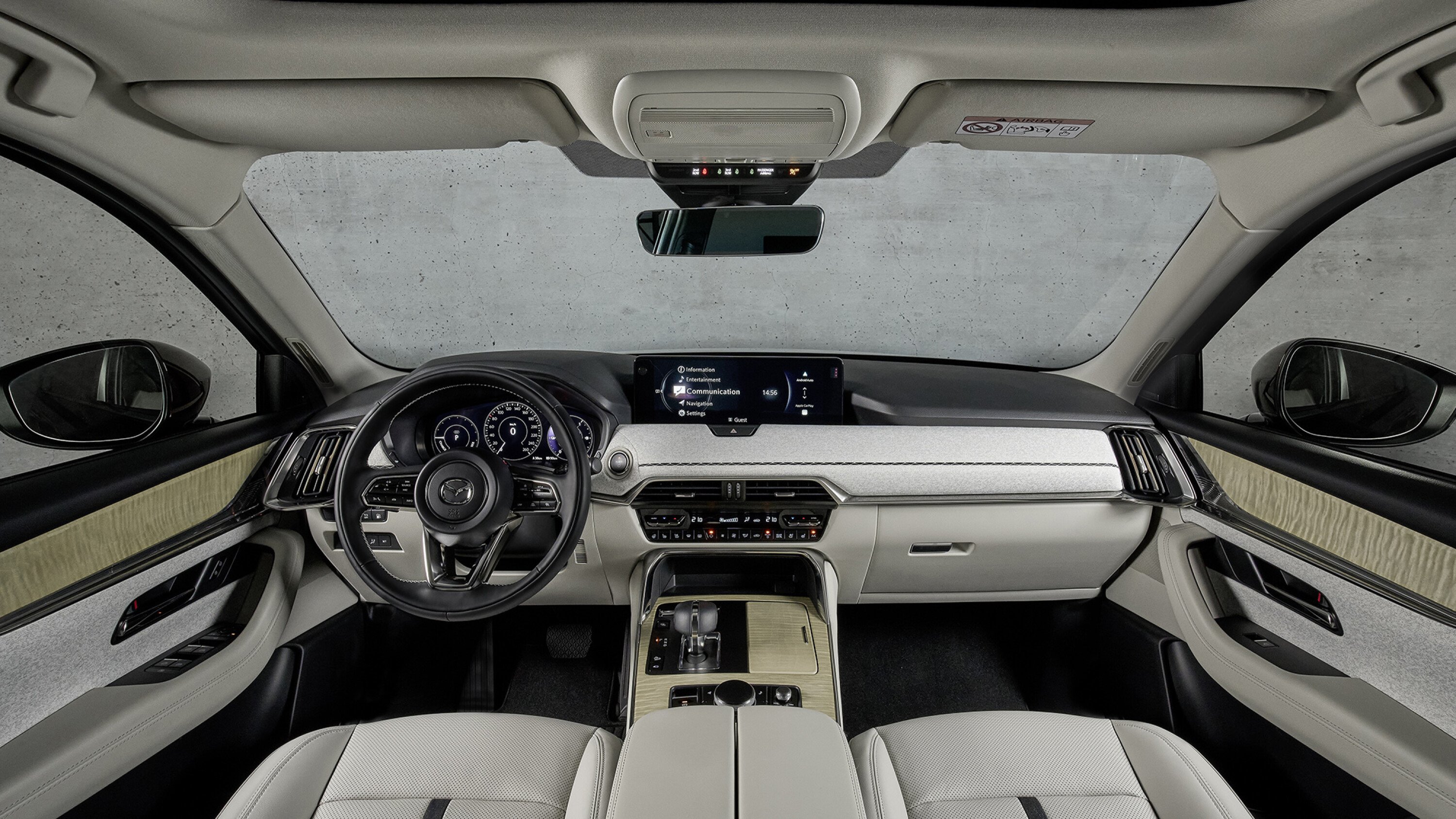
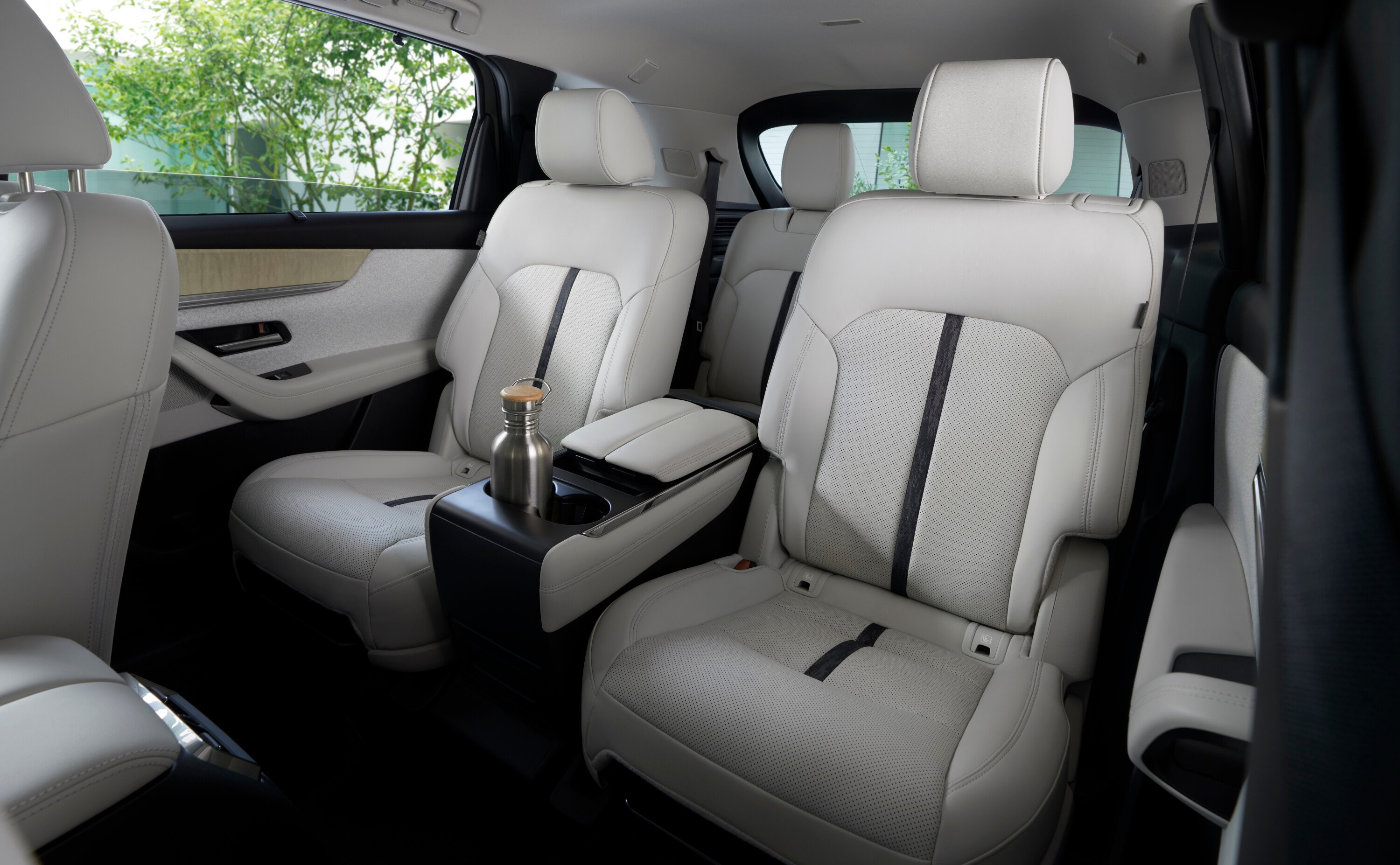
Heavily based on the midsize CX-60 and primarily aimed at European and Japanese tastes, the CX-80 is longer and taller, and has a stretched wheelbase.
However, it retains the CX-60’s more compact 1890mm width, compared to 1840mm for the CX-8 (+50mm), 1969mm for the CX-9 (-79mm), and 1994mm for the CX-70 and CX-90 (-104mm).
Mazda has confirmed the CX-80 measures “almost five metres long” compared to 4.74 metres for the CX-60, while it has a circa-250mm longer wheelbase – which appears to be the same 3120mm length as the broader CX-70 and CX-90. Exact dimensions have not been announced.
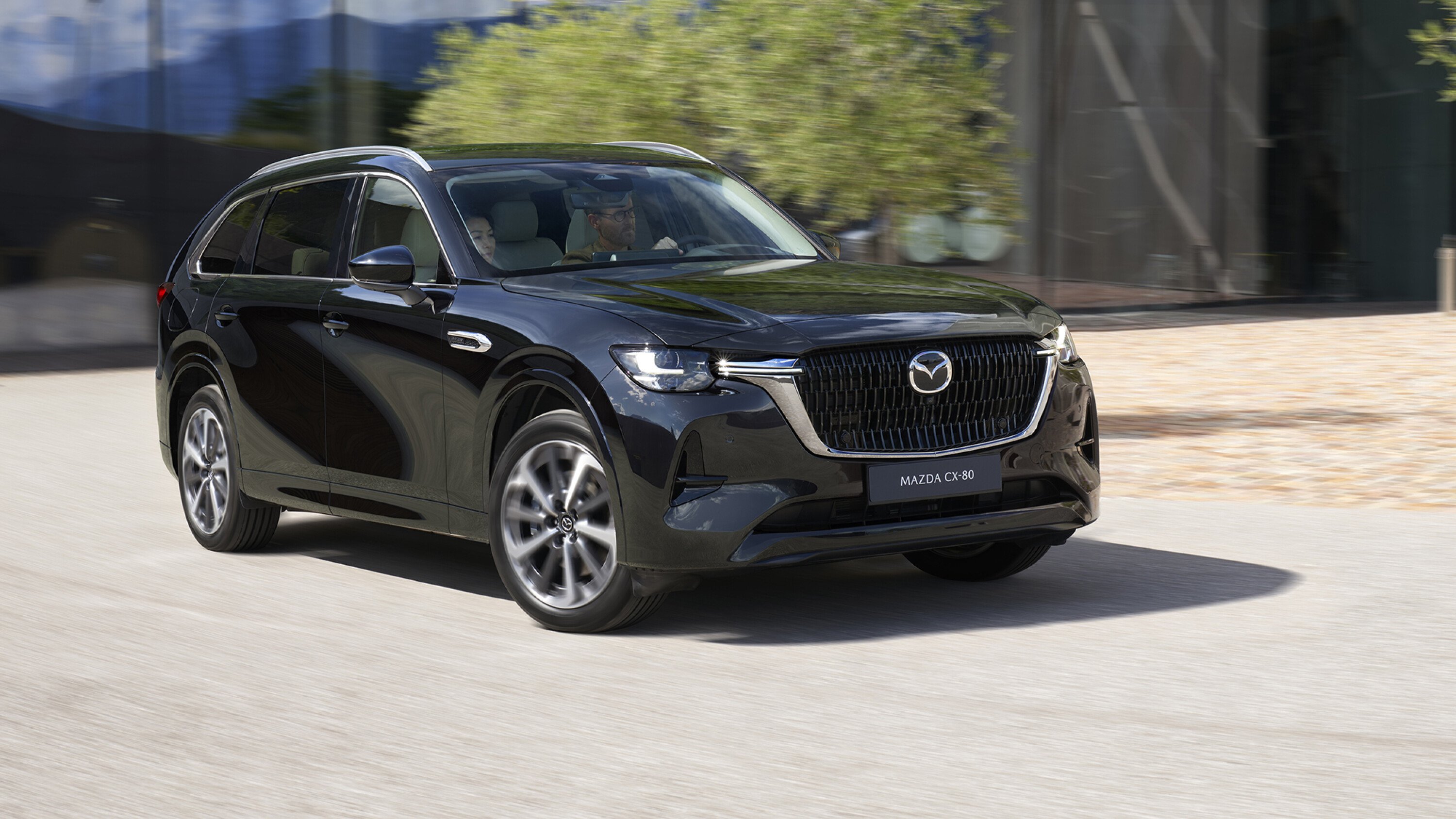
The CX-80 will offer the same powertrains as the CX-60 in Australia.
That includes a 209kW/450Nm 3.3-litre mild-hybrid six-cylinder turbo-petrol, a 187kW/550Nm 3.3-litre mild-hybrid six-cylinder turbo-diesel, and a 241kW/500Nm 2.5-litre four-cylinder plug-in hybrid.
An eight-speed single-clutch automatic transmission and rear-biased permanent all-wheel drive come as standard.
In line with the CX-70, the CX-80 will also debut some new features for the Mazda brand, including ‘unresponsive driver support’ to eventually slow and stop the vehicle if no driver engagement is detected.
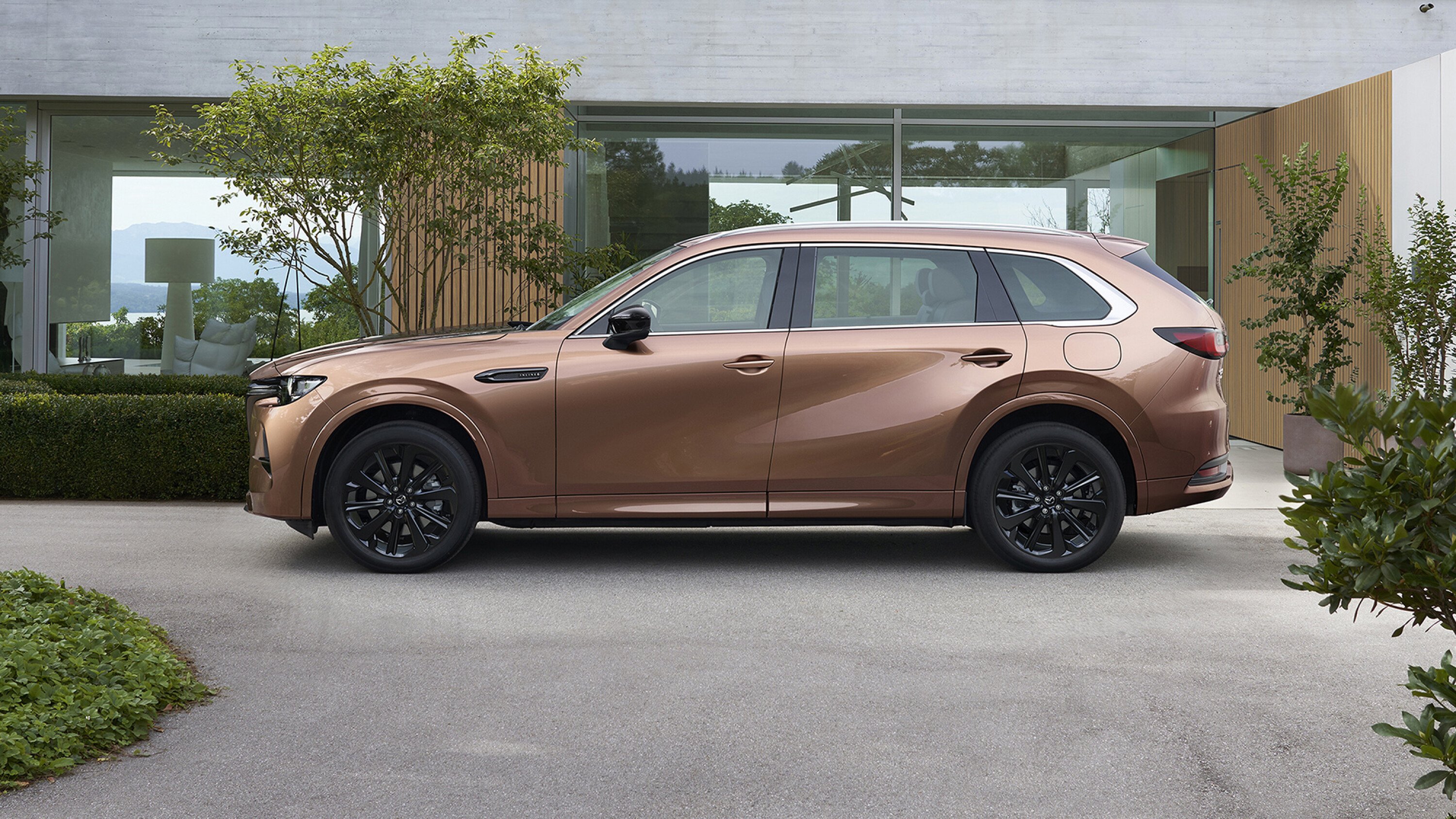
It also debuts head-on collision mitigation for the autonomous emergency braking system after ANCAP and its Euro NCAP counterpart began assessing this technology under the latest 2023-25 criteria, along with a more advanced lane-keep assist system to prevent head-on crashes.
Mazda Connected Services – launching in Australia next month with the latest MX-5 through a new ‘MyMazda’ application – will be available for the CX-80, while it will also feature a tow-bar camera view to assist in positioning a caravan or trailer.
Mild-hybrid petrol and plug-in hybrid models should have the same 2.5-tonne braked towing capacity as the CX-60, while the diesel could retain a lower 2-tonne limit due to a hot-weather limit for the Australian market.

Further details about the CX-80 remain limited for now, with more information – including full technical specifications – due to be announced at a later date.
Australian pricing and features will also be announced closer to its launch – though the brand has revealed the CX-80 will offer six seats with second-row captain’s chairs and a fixed centre console or seven seats with a conventional rear bench, depending on the variant.
The three-row CX-80 will carry a lower price tag than the CX-90, which costs between $74,500 and $94,435 before on-road costs, with dearer plug-in hybrid variants due at a later date.
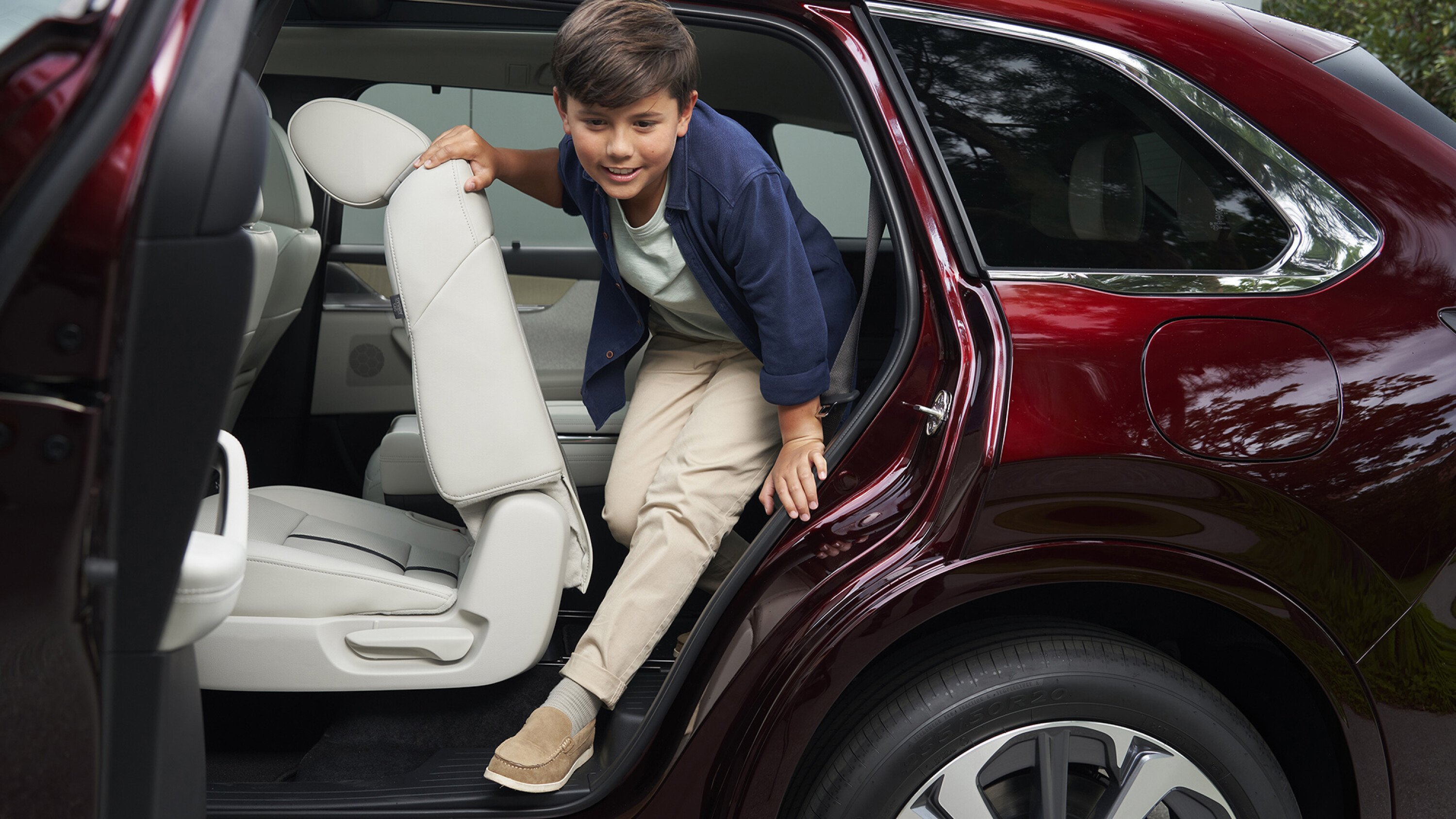
However, it will be pricier than popular entry-level versions of the CX-8 and CX-9 as the brand continues its ‘premium push’ here in Australia. The CX-8 was available for as low as $42,660 plus on-roads.
With the CX-60 starting at around $60,000 and stretching to $85,000 for the flagship PHEV variant, it’s fair to assume pricing for the CX-80 will start from around $65,000 to $70,000 and top out between $90,000 and $95,000 (all before on-road costs).
Australia is the only market globally to offer all four of Mazda’s latest SUVs – the CX-60, CX-70, CX-80 and CX-90 – based on the brand’s new Large Architecture.
The CX-60 and CX-80 are ‘narrow-body’ vehicles aimed at Europe and Japan, while the two-row CX-70 and three-row CX-90 are ‘wide-body’ vehicles aimed at the United States and Canada.
“[Australia is] privileged enough because I suppose we as a team think we can have an opportunity with all four. And here we are [in the situation] that we will have all four in our portfolio,” said Mazda Australia managing director Vinesh Bhindi at the reveal of the CX-70 in January.
“What that means is you might see some overlap, but really when you understand our business strategy – which always has been to give consumers as many opportunities and options and choice as possible and let the customer decide – it makes sense for us to get [all four].”
We recommend
-
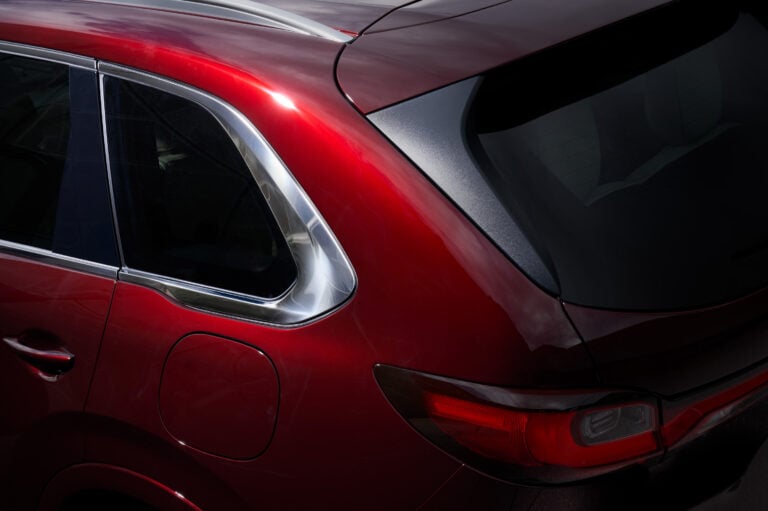 News
News2025 Mazda CX-80 three-row SUV teased ahead of April 18 reveal
Mazda to unveil the final model in its rear-biased SUV quartet – the CX-80 – next week ahead of an expected Australian launch in late 2024
-
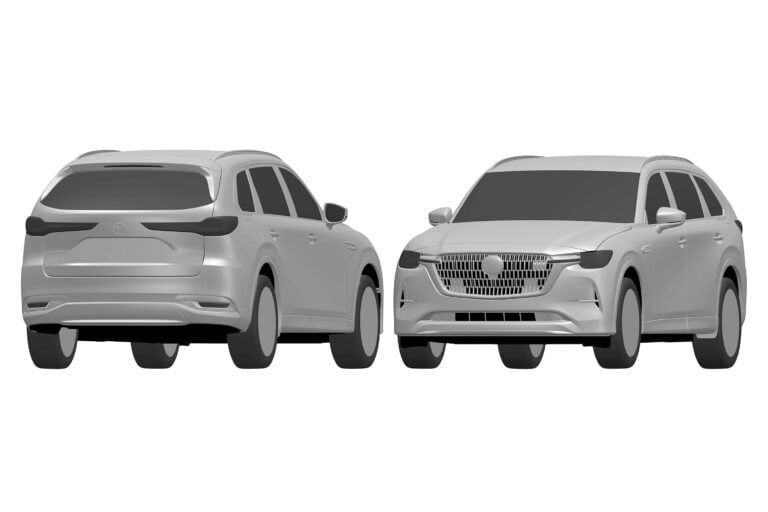 News
News2025 Mazda CX-80 revealed in patent images ahead of debut
Patent images have revealed how the Mazda CX-80 large SUV will look ahead of its official debut in the coming months
-
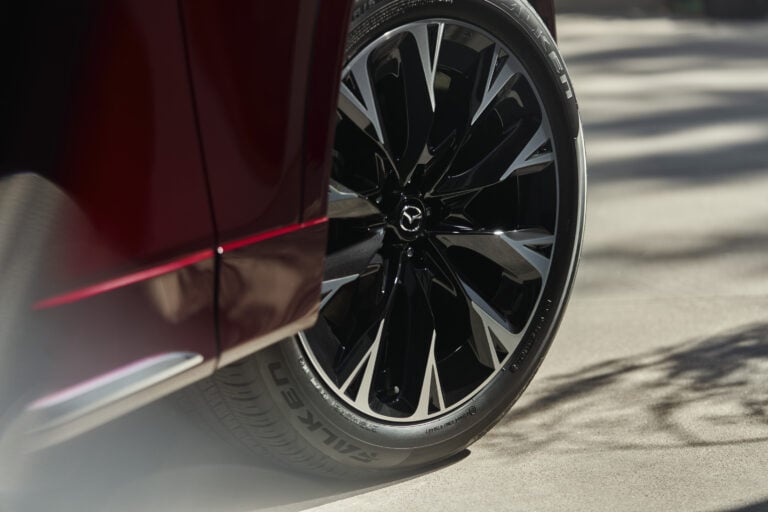 News
NewsNew Mazda models coming: CX-5, CX-70, CX-80, EZ-6, RX-7 & more
Your guide to what's around the corner for Mazda Australia in 2024, 2025 and beyond... plus some potential additions yet to be confirmed


